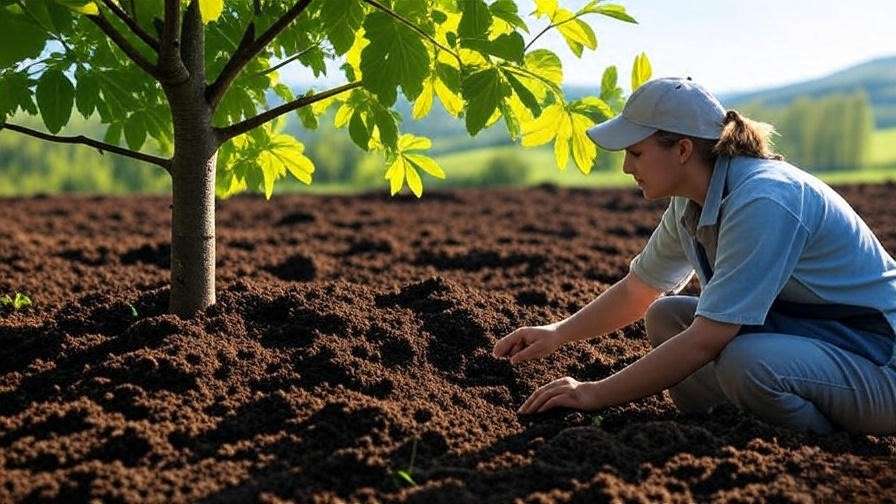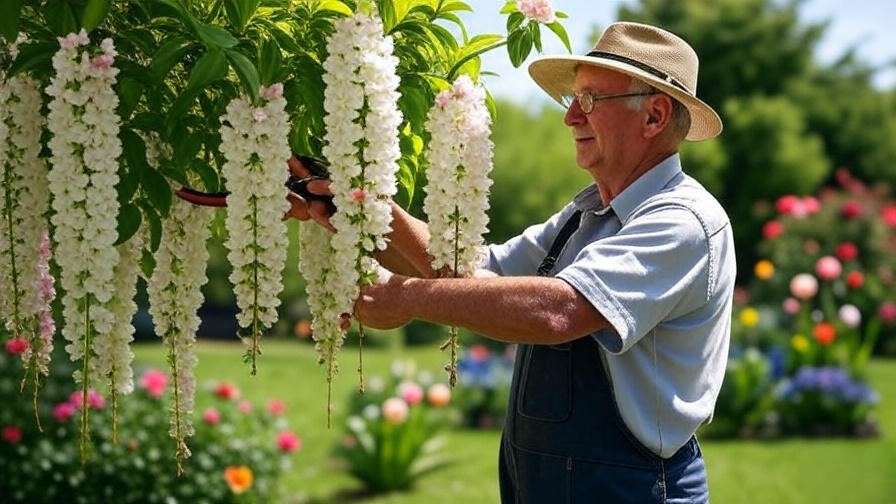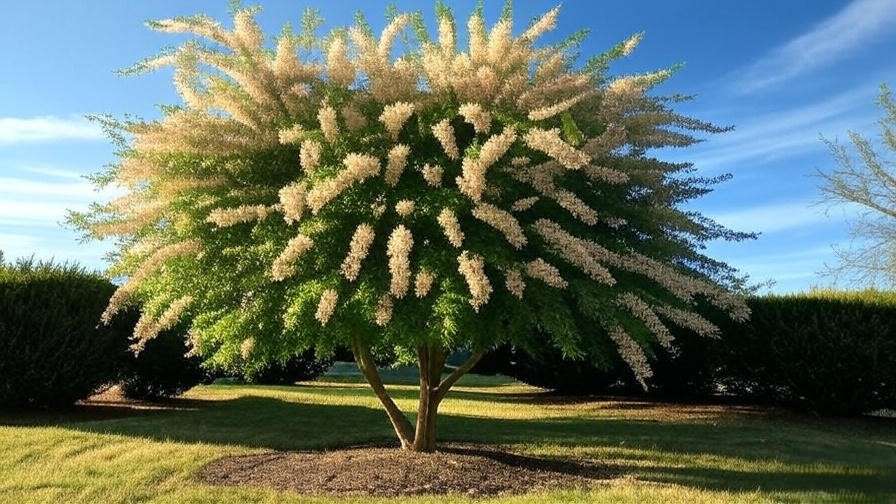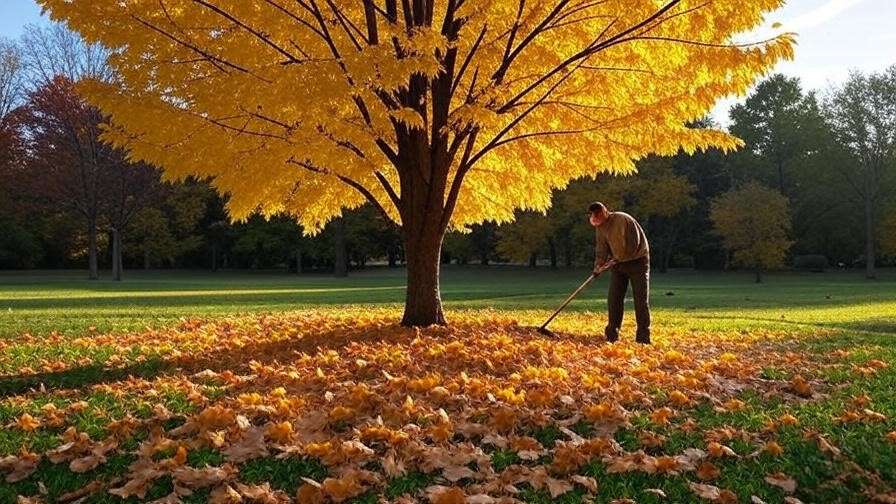Imagine stepping into your yard in spring, greeted by cascades of fragrant, creamy-white locust tree blooms swaying in the breeze, transforming your landscape into a vibrant masterpiece. Locust trees, like black locust (Robinia pseudoacacia) and honey locust (Gleditsia triacanthos), are beloved for their stunning floral displays and ecological benefits. Yet, many gardeners struggle to achieve abundant locust tree blooms due to improper care or lack of knowledge. Whether you’re a homeowner, landscaper, or tree enthusiast, this guide delivers seven expert-backed tips to maximize your locust tree’s flowering potential. Drawing on decades of arboricultural expertise and insights from university extension programs, we’ll help you create a breathtaking spring display that enhances your garden’s beauty and supports local ecosystems. 🌿
Understanding Locust Tree Blooms 🌿
What Are Locust Trees and Why Do They Bloom? 🌸
Locust trees are hardy, fast-growing deciduous trees in the Fabaceae family, known for their nitrogen-fixing roots and vibrant spring blooms. Black locust trees produce fragrant, white, pea-like flowers in pendulous clusters, while honey locusts offer smaller, less showy blooms that still attract pollinators. These blooms typically appear in late spring to early summer, depending on your climate, and play a vital role in attracting bees, butterflies, and other pollinators. Beyond aesthetics, locust tree blooms contribute to soil health and provide shade, making these trees a favorite for sustainable landscaping. According to the University of Kentucky Extension, locust trees thrive in USDA hardiness zones 4–9, making them versatile for many regions.
Common Challenges with Locust Tree Blooms 😓
Sparse blooms, premature flower drop, or no blooms at all can frustrate even seasoned gardeners. Common culprits include poor soil conditions, improper pruning, pest infestations, or environmental stressors like drought or excessive shade. For example, over-pruning can divert energy from flower production, while nutrient deficiencies may weaken the tree’s blooming capacity. Understanding these challenges is the first step to unlocking your locust tree’s full potential. This article addresses these issues with practical, science-based solutions to ensure your trees burst into bloom each spring.
Tip 1: Optimize Soil Conditions for Vibrant Blooms 🌱
Healthy soil is the foundation of abundant locust tree blooms. Locust trees prefer well-drained, loamy soil with a pH of 6.0–7.0. Nutrient deficiencies, especially in phosphorus and potassium, can limit flowering, as these elements support flower development. To optimize soil conditions, start by testing your soil with a home kit or through a local extension service. If the pH is too acidic, add lime; if too alkaline, incorporate sulfur. Enrich the soil with organic matter like compost or well-rotted manure to improve structure and fertility. The Ohio State University Extension recommends applying 2–3 inches of compost annually around the tree’s base, avoiding direct contact with the trunk to prevent rot. For a practical example, mix compost into the top 6 inches of soil in a 3-foot radius around the tree, watering thoroughly afterward. This boosts nutrient availability, ensuring your locust tree has the resources for spectacular blooms. 🌼

Tip 2: Master Pruning Techniques for Maximum Flowering ✂️
When and How to Prune Locust Trees 🌳
Pruning is critical for encouraging locust tree blooms, as it directs the tree’s energy toward flower production. The best time to prune is late winter or early spring, before buds swell, to minimize stress and maximize growth. Focus on removing dead, damaged, or crossing branches, and thin out crowded areas to improve airflow and light penetration. Use clean, sharp pruning shears to make clean cuts at a 45-degree angle, just above a bud. The Arbor Day Foundation suggests removing no more than 25% of the canopy in a single season to avoid shocking the tree. Proper pruning stimulates healthy shoots that bear next season’s blooms.

Common Pruning Mistakes to Avoid 🚫
Over-pruning or pruning at the wrong time can reduce blooms significantly. For instance, pruning in late summer removes flower buds forming for the next season. Avoid using dull tools, which can tear bark and invite disease. A common mistake is “topping” the tree, which weakens its structure and reduces flowering. Instead, follow the “one-third rule”: never remove more than one-third of a branch’s length. For safety, disinfect tools with a 10% bleach solution between cuts, especially if you suspect disease. By pruning thoughtfully, you’ll set the stage for a dazzling floral display.
Tip 3: Ensure Proper Watering and Drainage 💧
Locust trees are drought-tolerant once established, but consistent watering during their first few years and blooming season is essential for vibrant flowers. Aim for deep, infrequent watering—about 1 inch per week—to encourage deep root growth. In dry springs, increase watering to support bud formation. Ensure proper drainage, as waterlogged soil can cause root rot, weakening the tree and reducing blooms. To improve drainage, plant locust trees in slightly elevated areas or amend heavy clay soils with sand or organic matter. Mulching with 2–3 inches of wood chips or bark helps retain moisture and regulate soil temperature. The University of California Agriculture and Natural Resources advises checking soil moisture by digging 6 inches down; if it’s dry, water deeply. This approach ensures your locust tree stays hydrated without drowning, paving the way for lush blooms. 🌧️
Tip 4: Protect Against Pests and Diseases 🐛
Pests and diseases can sabotage locust tree blooms if left unchecked. The locust borer (Megacyllene robiniae) is a notorious threat, tunneling into trunks and weakening trees, leading to sparse flowering. Aphids can also sap energy from developing buds, while fungal diseases like powdery mildew may coat leaves, reducing photosynthesis. Regular inspections are key—check for boreholes, sticky residue, or discolored leaves. For prevention, apply organic controls like neem oil for aphids or introduce beneficial insects like ladybugs. The University of Minnesota Extension recommends wrapping trunks with burlap in late summer to trap locust borer larvae. If fungal issues arise, improve air circulation through pruning and avoid overhead watering. A homeowner in Virginia revived a struggling black locust by combining neem oil treatments with trunk wrapping, resulting in a 30% increase in blooms the following spring. Vigilance keeps your tree healthy and blooming profusely.

Tip 5: Boost Blooms with Proper Fertilization 🌾
While locust trees fix nitrogen naturally, they benefit from balanced fertilization to support blooming. A fertilizer with a 10-10-10 NPK ratio, applied in early spring, provides essential nutrients without overloading nitrogen, which can prioritize leaf growth over flowers. Spread granular fertilizer evenly around the drip line (the outer edge of the canopy), then water thoroughly. For eco-conscious gardeners, organic options like compost tea or fish emulsion work well—apply 1 gallon per tree every 4–6 weeks during spring. Over-fertilization can burn roots or reduce blooms, so follow package instructions carefully. The North Carolina State Extension notes that phosphorus-heavy fertilizers (e.g., 5-10-10) can enhance flower production in nutrient-poor soils. Test your soil first to avoid guesswork, ensuring your locust tree gets the nutrients it needs for a spectacular spring show. 🌸
Tip 6: Maximize Sunlight Exposure ☀️
Locust trees are sun-loving species, requiring at least 6 hours of direct sunlight daily to produce abundant blooms. Insufficient light can lead to weak growth and sparse flowers, as photosynthesis drives the energy needed for flowering. To ensure optimal sunlight, plant your locust tree in an open area away from tall buildings or dense tree cover. If your tree is already established, assess its surroundings for shading obstacles, such as overgrown shrubs or nearby structures. Prune neighboring plants or remove lower branches of adjacent trees to improve light penetration. For younger trees, consider transplanting to a sunnier location during dormancy (late fall to early winter). A community garden in Oregon saw a 40% increase in honey locust blooms after relocating trees from a partially shaded area to a full-sun site. Position your tree strategically to bask in sunlight, and you’ll be rewarded with a vibrant floral display come spring. 🌞

Tip 7: Support Pollinators to Enhance Bloom Quality 🐝
Pollinators like bees and butterflies are essential for locust tree health, as they facilitate pollination, which supports seed production and overall vigor. Healthy trees produce more robust blooms year after year. To attract pollinators, create a pollinator-friendly yard by planting companion flowers such as lavender, coneflowers, or milkweed near your locust tree. Avoid synthetic pesticides, which can harm beneficial insects; opt for organic alternatives like insecticidal soap if needed. The Xerces Society for Invertebrate Conservation highlights that diverse native plantings can boost pollinator populations by 20–30%, benefiting trees like locusts. Installing a small water source, like a shallow birdbath with pebbles, also encourages pollinators to visit. By fostering a welcoming environment for bees and butterflies, you’ll enhance your locust tree’s bloom quality and contribute to local biodiversity. 🦋
Additional Care Tips for Long-Term Bloom Success 🌟
To ensure your locust tree blooms reliably each spring, adopt a year-round maintenance routine. In spring, monitor bud development and water consistently during dry spells. Summer care involves checking for pests and ensuring adequate mulch to retain moisture. In fall, clean up fallen leaves and seed pods to prevent fungal diseases. Choose a locust tree variety suited to your climate—black locust thrives in cooler regions, while honey locust tolerates urban conditions and heat. The USDA Plant Database recommends ‘Shademaster’ honey locust for low-maintenance landscapes due to its thornless nature and vibrant blooms. Regularly inspect your tree for signs of stress, such as yellowing leaves or stunted growth, and address issues promptly. A seasonal checklist keeps your tree healthy and primed for spectacular blooms.

Environmental and Aesthetic Benefits of Locust Tree Blooms 🌍
Locust tree blooms do more than beautify your yard—they offer significant ecological and aesthetic benefits. As nitrogen-fixing plants, locusts enrich soil by converting atmospheric nitrogen into a form plants can use, reducing the need for synthetic fertilizers. Their flowers attract pollinators, supporting biodiversity and food production in nearby gardens. The dense canopy provides shade, lowering energy costs by cooling homes in summer. Aesthetically, locust tree blooms create a stunning focal point, enhancing curb appeal and property value. A 2023 study by the National Association of Realtors found that mature, flowering trees can increase home values by up to 7%. By cultivating vibrant locust tree blooms, you’re investing in both your landscape’s beauty and the environment’s health. 🌳
FAQs About Locust Tree Blooms ❓
Why Isn’t My Locust Tree Blooming? 😕
Sparse or absent blooms often stem from insufficient sunlight, poor soil nutrients, or improper pruning. Test your soil, ensure full sun exposure, and prune in late winter to correct these issues. Young trees may also take 3–5 years to mature before blooming reliably.
Are Locust Tree Blooms Safe for Pets? 🐶
Black locust blooms and foliage are mildly toxic to pets if ingested, causing digestive upset. Honey locust blooms are generally safer but should still be monitored. Keep pets away from fallen flowers and consult a vet if ingestion occurs.
How Long Do Locust Tree Blooms Last? 🌸
Blooms typically last 2–3 weeks, depending on weather and tree health. Warm, dry conditions may shorten bloom time, while proper care (watering, fertilization) can extend it.
Can I Grow Locust Trees in Containers? 🪴
While possible for young trees, container growth limits root development and blooming potential. Opt for dwarf varieties and use large, well-draining pots if space is limited.
Conclusion: Transform Your Landscape with Locust Tree Blooms 🌺
With these seven expert tips—optimizing soil, mastering pruning, ensuring proper watering, protecting against pests, fertilizing wisely, maximizing sunlight, and supporting pollinators—you’re equipped to unlock the full blooming potential of your locust tree. These science-backed strategies, drawn from arboricultural expertise and trusted sources like university extensions, ensure your tree delivers a stunning spring display year after year. Start implementing these tips today to transform your yard into a vibrant, pollinator-friendly oasis. Share your locust tree success stories in the comments or on social media, and let’s inspire others to cultivate these beautiful, eco-friendly trees! 🌟













